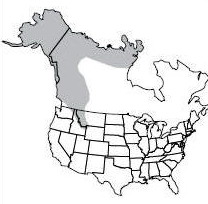The brown bears of North America have lost considerable range, and are currently restricted to western Canada, Alaska, and the northwestern United States. Their populations are considered secure in Canada and Alaska, but have declined significantly in the lower 48 states. Before settlement, 100,000 brown bears may have ranged south of Canada onto the Great Plains along stream systems such as the Missouri River, and in isolated, small mountain ranges such as the Black Hills of South Dakota. They were scattered rather thinly in Mexico and in the southwestern United States, but may have numbered about 10,000 in California, occupying the broad, rich valleys as well as the mountains.
A few brown bears (the “Mexican†or “California†grizzly) may still exist in northern Mexico. Occasionally, barren-ground grizzlies are found hunting seals on the sea ice north of the Canadian mainland. The barren-ground grizzlies appear to be brown bear/ polar bear crosses, and could represent an intergrade form. Brown bears also occur on three large islands in the gulf of Alaska, and are isolated geographically from very similar coastal brown bears.
A nearly isolated population (the Yellowstone grizzly) occurs in southern Montana, Wyoming, and southern Idaho. There could still be a few grizzlies in the mountains of southwestern Colorado, and a few still range out onto the prairies of Alberta and Montana, where the extinct Plains grizzly used to roam.
